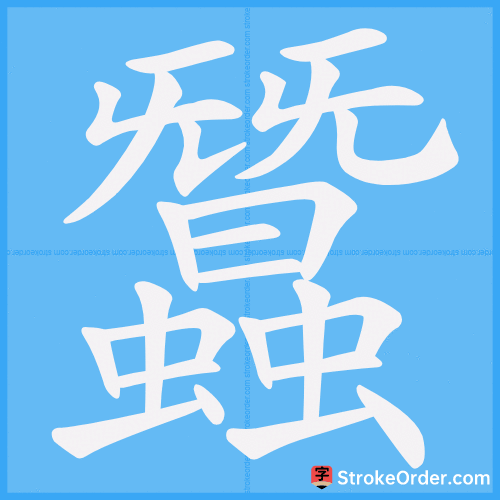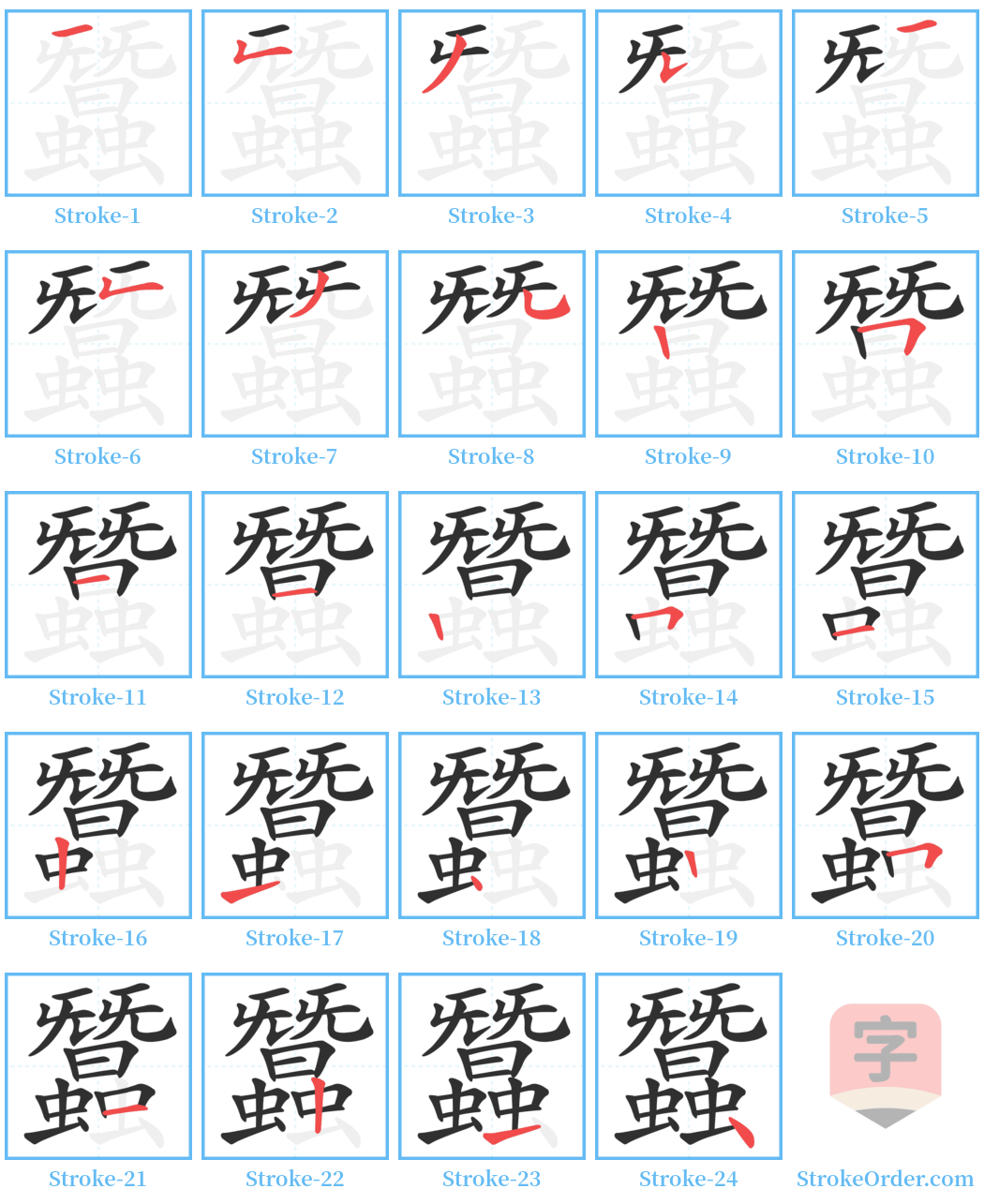蠶 Stroke Order
Animated Stroke Order of 蠶

Stroke Order Diagrams for 蠶

Step-by-Step Handwriting Guide for 蠶

Learn to Write Chinese Characters with Video Tutorials
Watch the video of writing the Chinese character "蠶", learn the correct stroke order (笔顺) of the character "蠶", and master the standard way of writing the character "蠶".
Free Printable Handwriting Practice with Stroke Order: 蠶
Printable Writing Practice Worksheet of "蠶" in Portrait Orientation (Tian Zi Ge)

Printable Writing Practice Worksheet of "蠶" in Landscape Orientation (Tian Zi Ge)

Information of 蠶
Pinyin
cán
Radical
虫
Strokes
24 strokes
Usage
★★★
Definition
silkworm
蠶 (cán)
1. The general term for insects of the families Bombycidae and Saturniidae. The larvae can produce silk and make cocoons. The cocoon silk can be used as a fiber resource. For example: domesticated silkworm; oak silkworm; castor silkworm. In the "Shuowen Jiezi – Feng Bu," it states, "Silk can be spun." In the "Book of Songs – Wei Feng – Shuoshu," it says: "The people criticize their ruler for heavily taxing them, as the silkworms feed on the subjects without improving governance, greedy and fearful of the people." Kong Yingda's commentary explains: "Feeding like a silkworm refers to the silkworm feeding on mulberry leaves, gradually consuming them until they are exhausted." In the Southern Song Dynasty, Bao Zhao wrote in "Five Poems of the Hidden Orchid" (Poem 4): "The small silkworm gets tangled in the net, while the silkworms leisurely spin their silk."
2. To raise silkworms. In "Shujing – Yugong," it mentions: "The mulberry land raises silkworms." Kong Yingda's commentary states: "Soil suitable for mulberry already raises silkworms." In the "Book of Jin – Biography of Murong Huang," it states: "They farm for food, raise silkworms for clothing, which is also the way of heaven." In Tang Dynasty poet Li Bai's "Gongwu Crossing the River," it says: "Kill the rushing floods; the Nine Provinces begin to cultivate mulberry and raise silkworms."
Noun: The general term for insects of the order Lepidoptera, families Bombycidae and Saturniidae. Capable of spinning silk, they move in a segmented manner, possessing six pairs of legs on the thorax, abdomen, and tail, feeding on mulberry leaves. From larva to adult, they must molt several times, approximately every three to four days. After several molts, they form cocoons, undergo pupation, and transform into moths.
Verb: To raise silkworms. In the "Book of Jin – Volume 110 – Biography of Murong Huang," it states: "They farm for food, raise silkworms for clothing, which is also the way of heaven." In the "New Book of Tang – Volume 112 – Biography of Han Siyian," it states: "One man farms, one woman raises silkworms; the clothing and food for a hundred people, how can there be any surplus to save?"